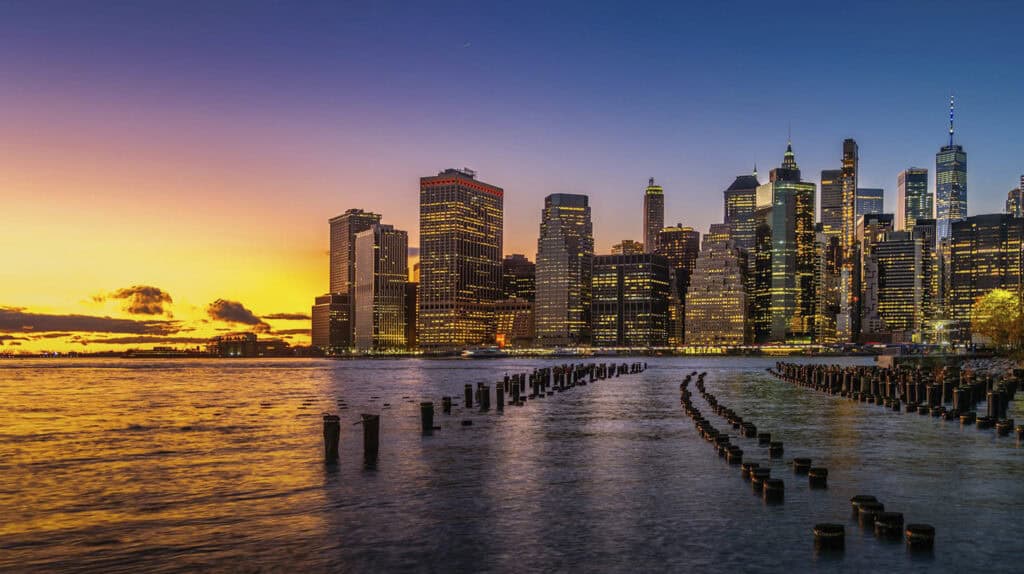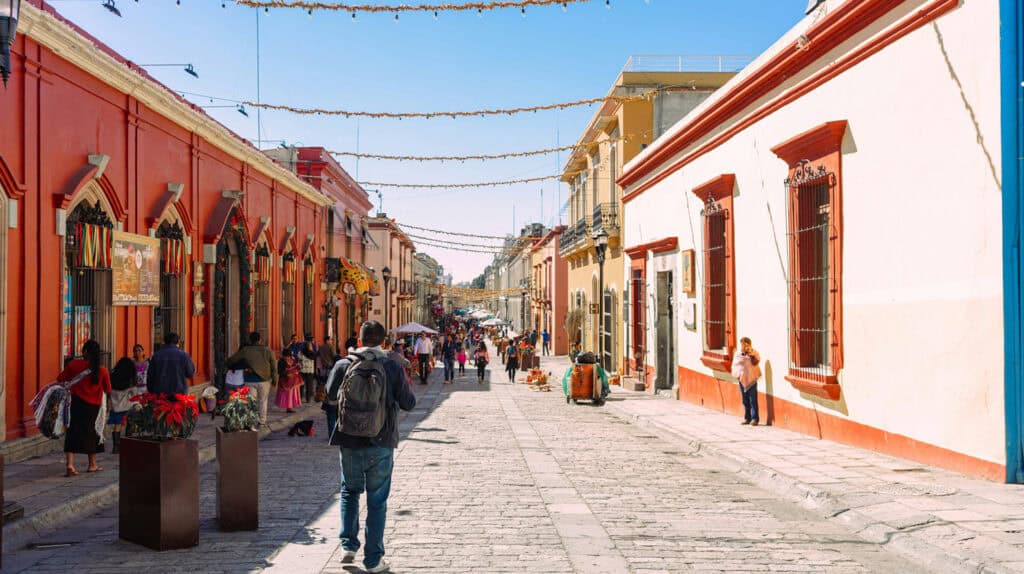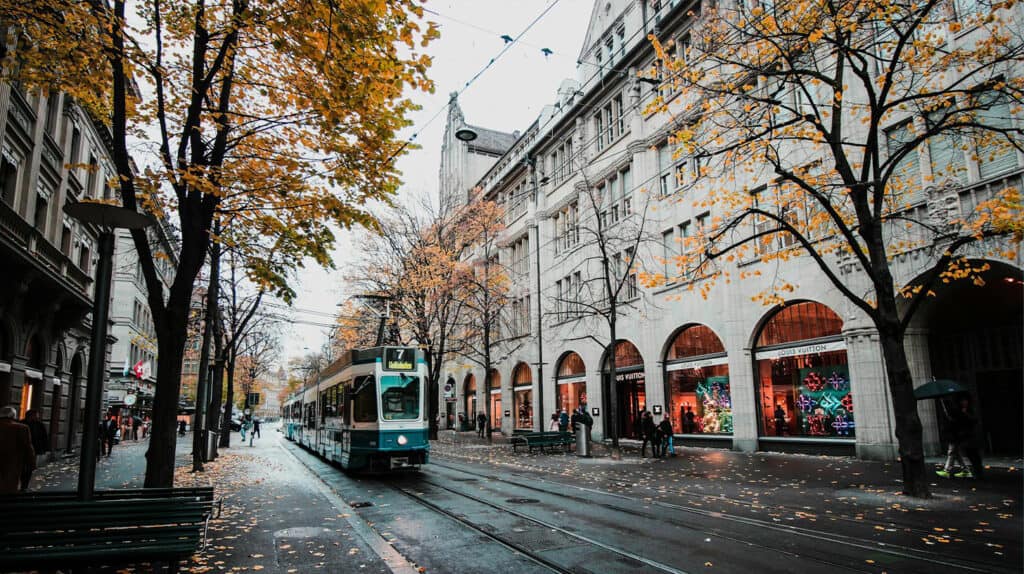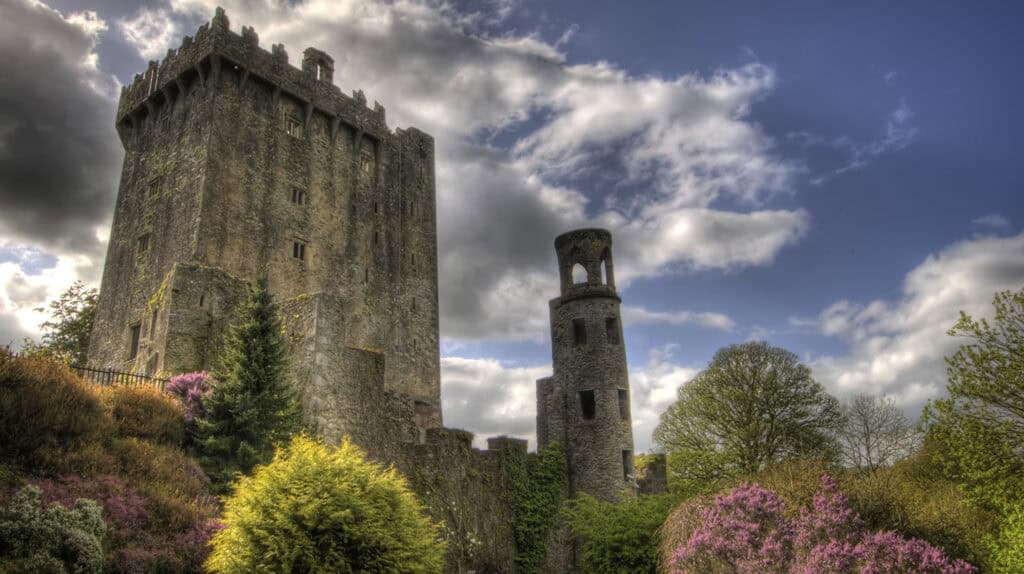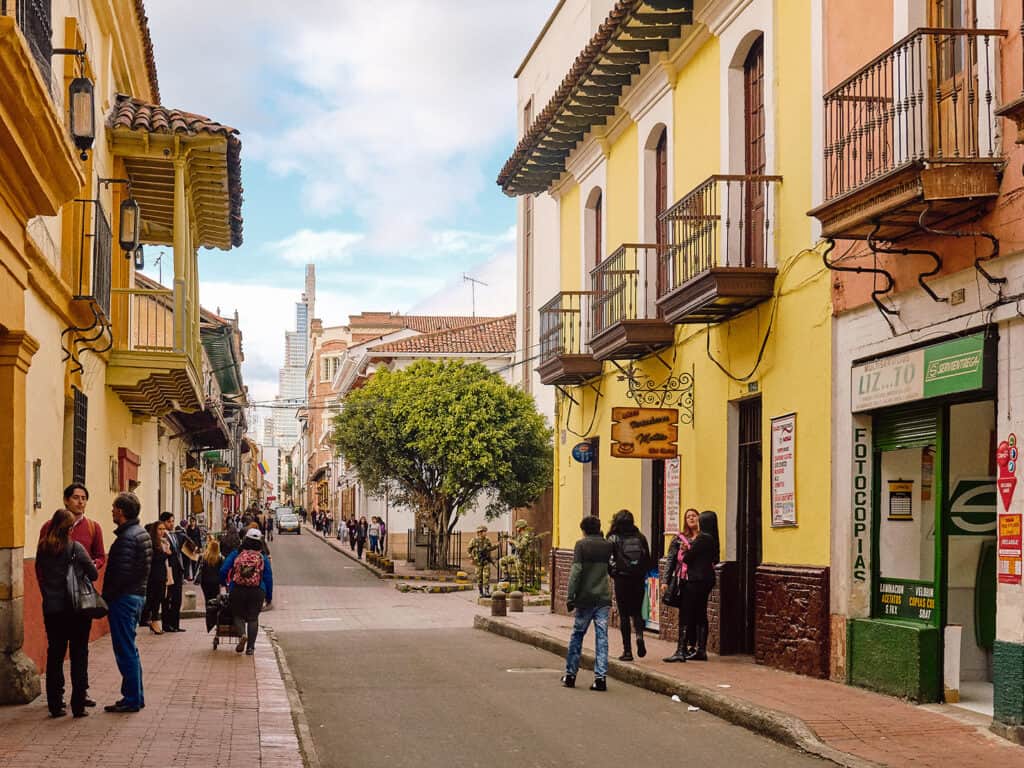
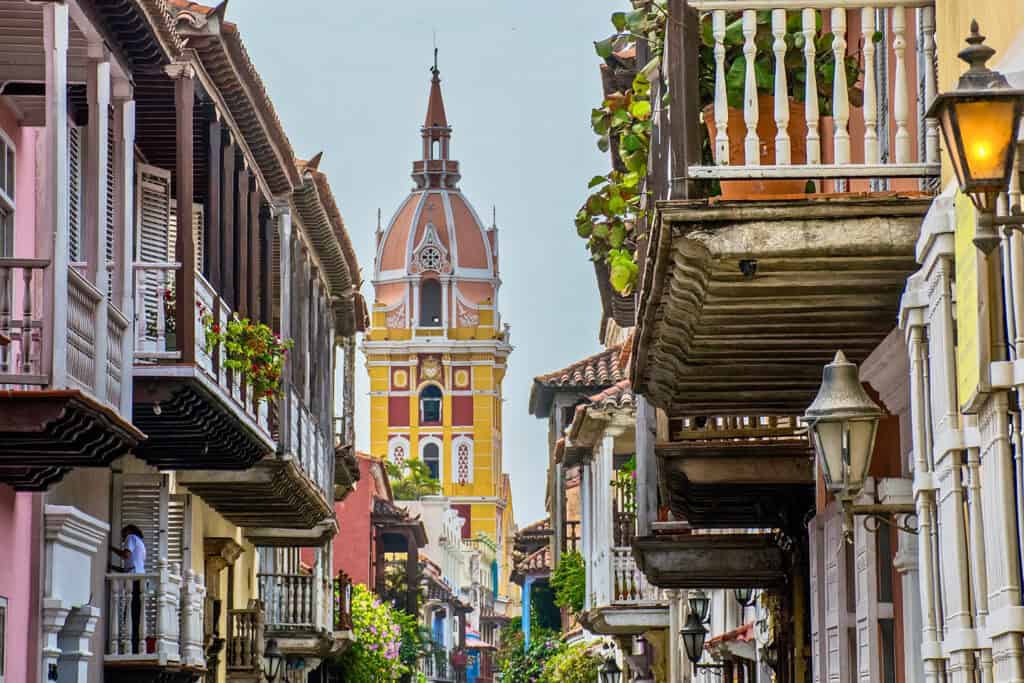
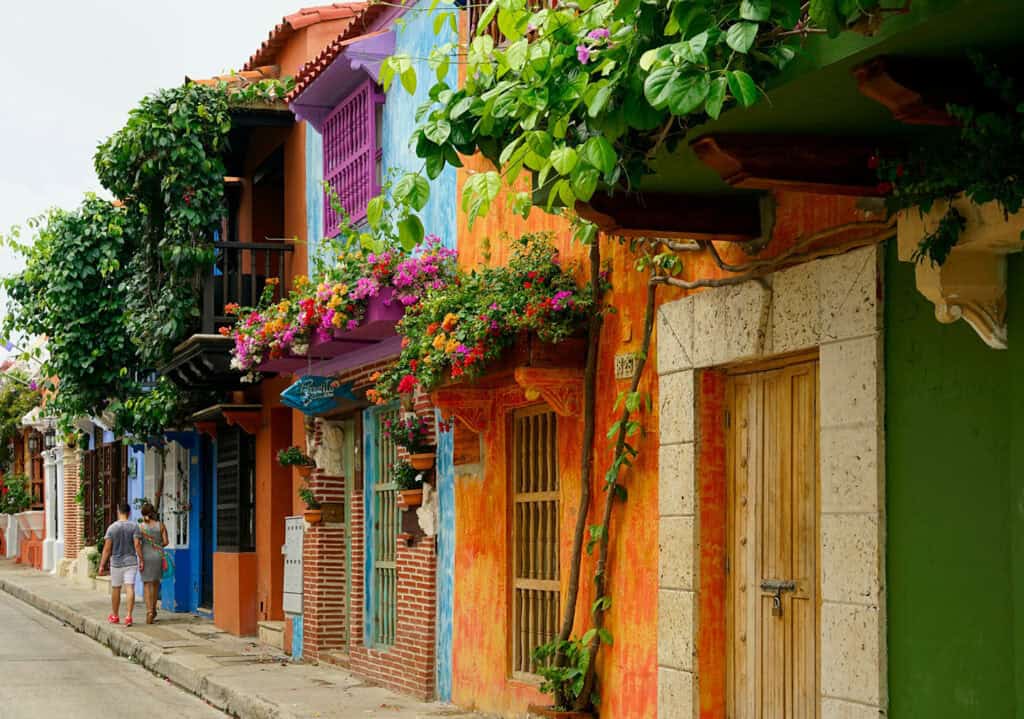
Are you fascinated by the rich cultural heritage of Colombian architecture?
At Landmarks Architecture, we value Colombia’s unique, beautiful, and important architecture. We know its historical periods and styles. We aim to guide you through the world of traditional Colombian architecture.
In this article, we will cover:
- The evolution of architectural styles from pre-colonial to modern periods
- Key characteristics of Spanish Colonial, Moorish, Baroque, and Republican architecture
- Materials and construction techniques that define Colombian buildings
- The importance of preserving cultural heritage in contemporary design
Ready to explore the architectural wonders of Colombia?
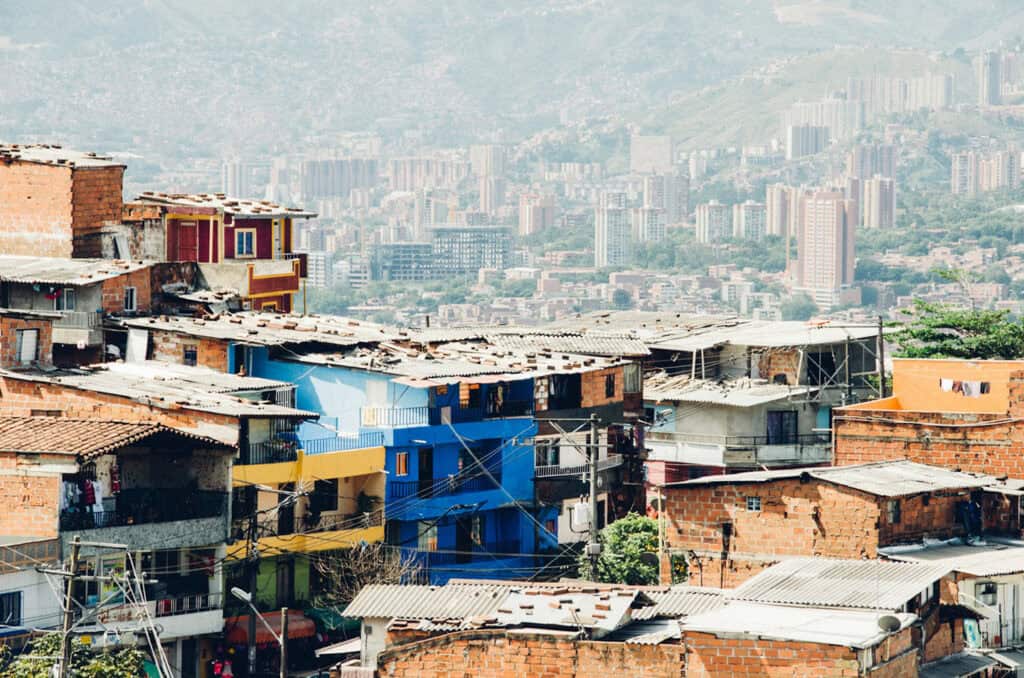
Historical Periods of Colombian Architecture
Colombian architecture has evolved through distinct historical phases. Each phase has unique influences, styles, and local adaptations.
Pre-Colonial Period
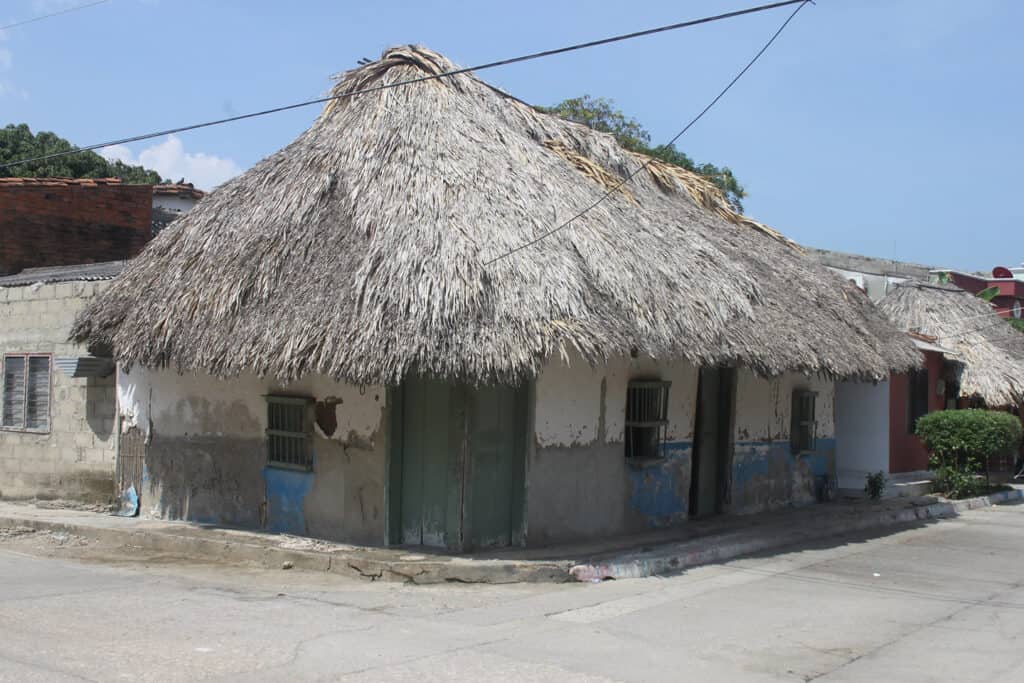
Indigenous architects in Colombia utilized local materials in their constructions. They used palm tree leaves, adobe, and clay to build homes and community structures.
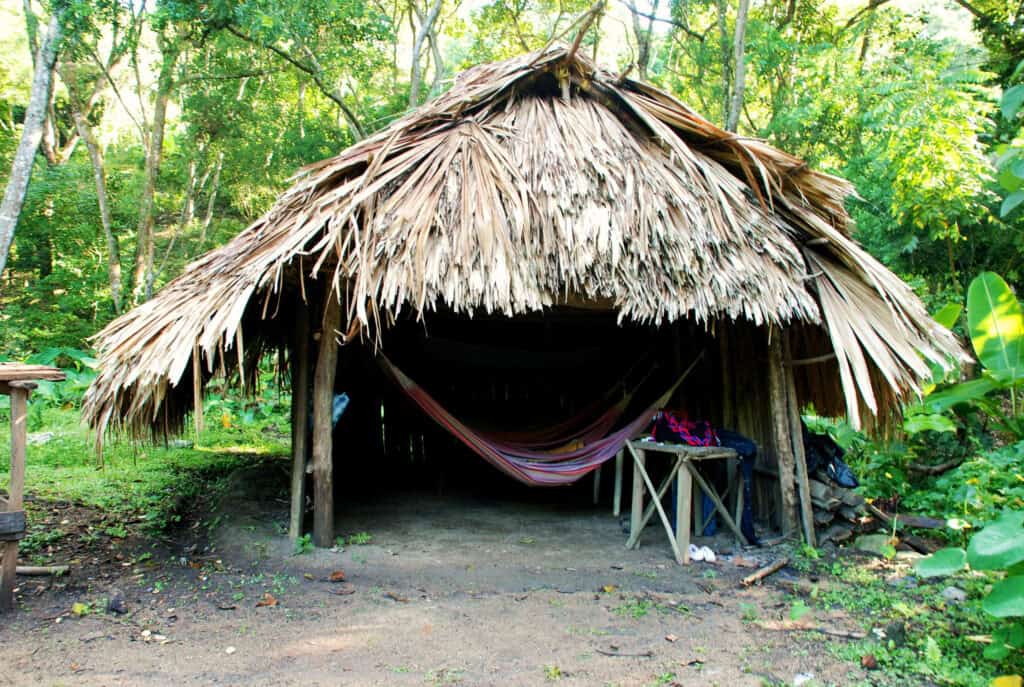
The style was mainly functional and communal. Designs often had a central patio. These spaces served as gathering areas, promoting social interaction and worship. Indigenous communities constructed ceremonial sites and tombs, displaying artistry through stone and wood.
See also: Famous Architecture in Colombia: Exploring 14 Iconic Buildings
Colonial Period
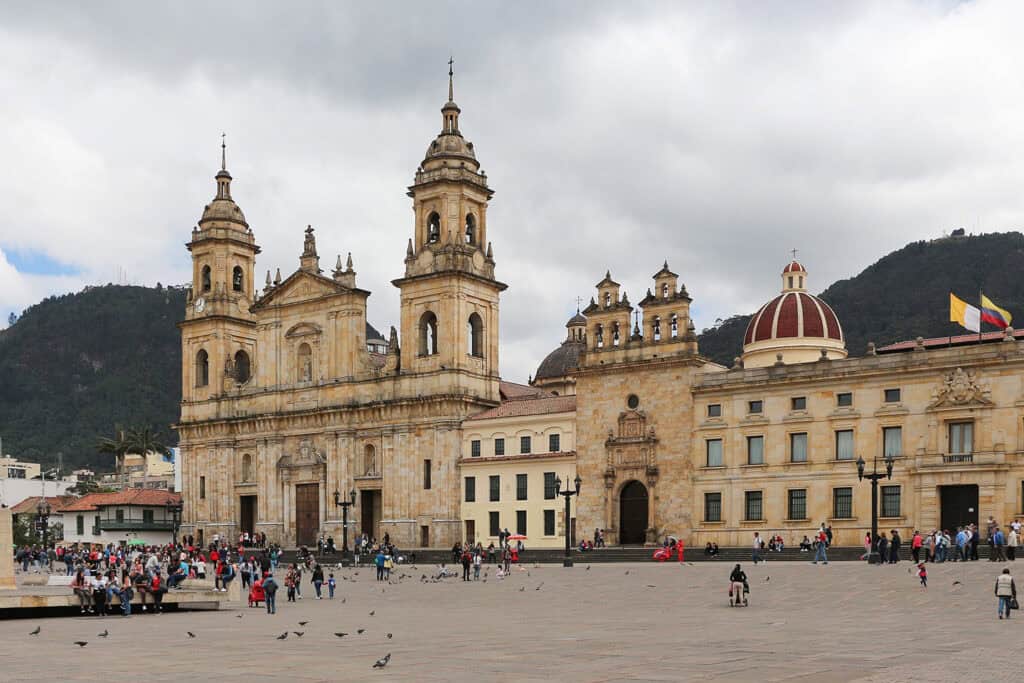
The Spanish arrival in the 16th century brought Colonial architecture. It was influenced by Castilian and Moorish styles. This led to the emergence of grand religious structures, such as Catholic churches.
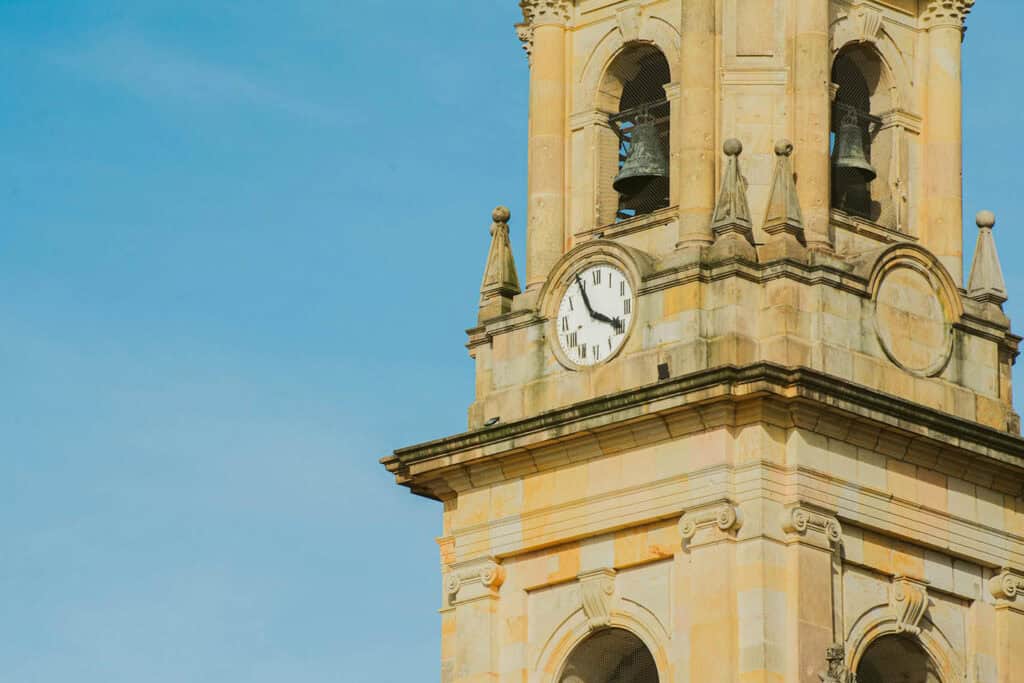
Defense needs led to fortified cities, especially Cartagena, a UNESCO site. The architecture during this time embodied both religious devotion and colonial power.
Republican Period

The Republican Period saw a shift to Neoclassical influences. It also brought a more organized approach to urban planning. The emergence of Republican architecture involved designs that emphasized symmetry and grandiose facades.
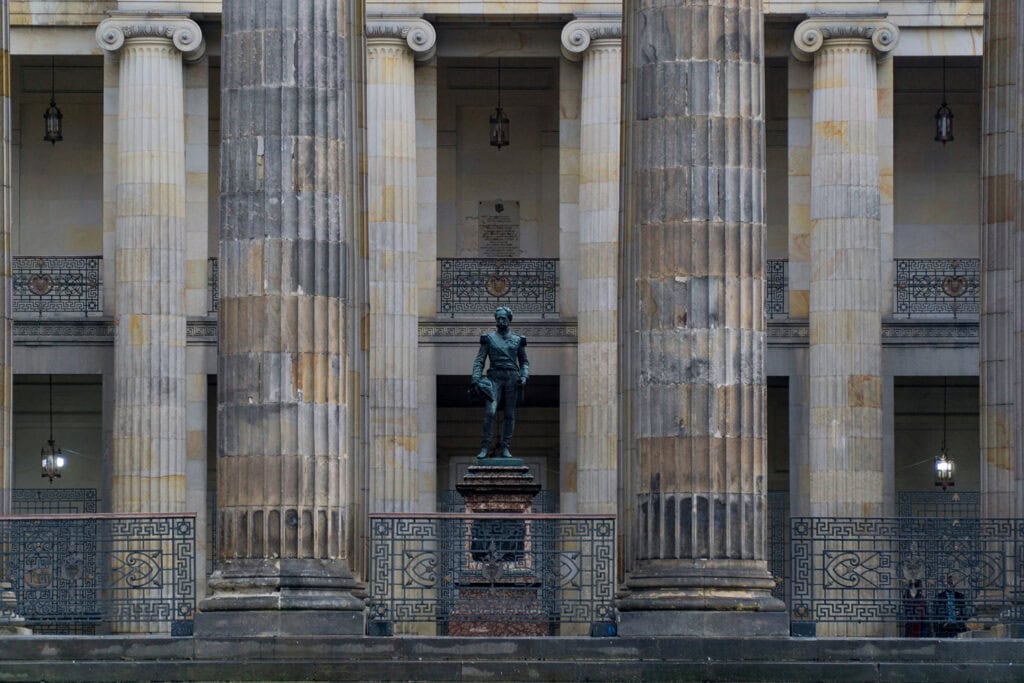
This architectural evolution reflected Colombia’s aspirations for modernization and its post-colonial identity. Prominent cities began to showcase government buildings and public spaces. They celebrated national pride.
Modern Period
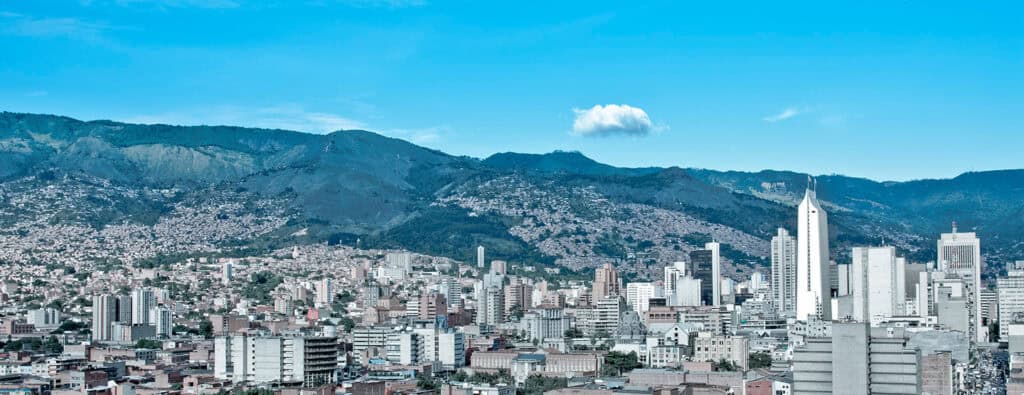
In the Modern Period, architects blended modernist designs with traditional ones. This unique mix defined urban landscapes.
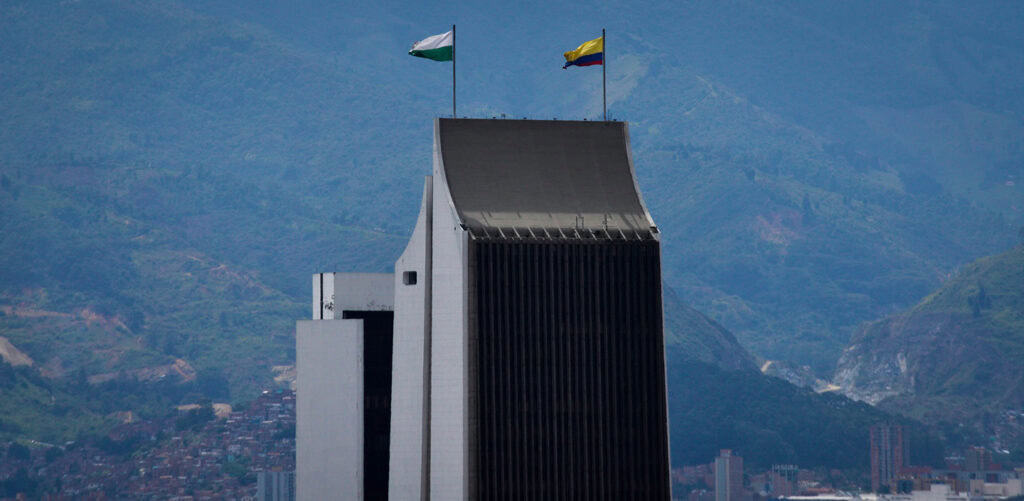
The rise of high-rises and public buildings marked a shift from traditional styles. They reflected modern needs and hopes. These changes in architecture symbolized Colombia’s development. They showed a vibrant urban culture, blended with historical heritage.
Key Architectural Styles in Colombia
Colombia’s architecture reflects a rich historical influence and regional variations. It blends styles from Spanish colonial roots, Moorish traditions, and modern takes.
1. Spanish Colonial Architecture
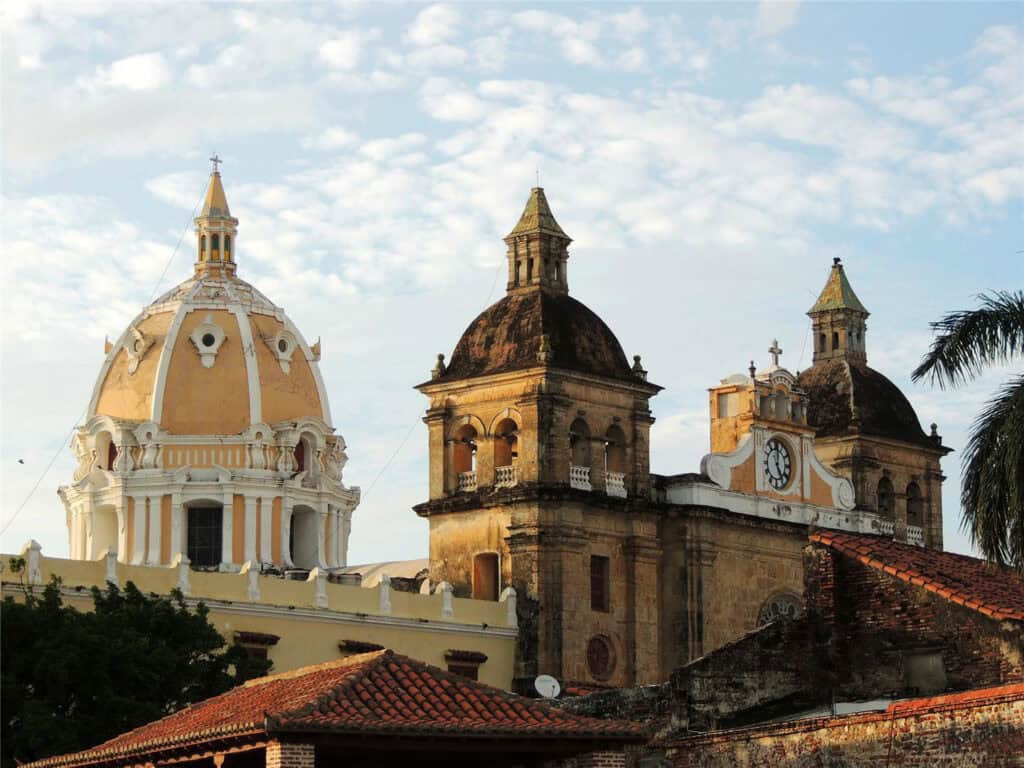
Spanish Colonial architecture in Colombia features these key elements:
- Central patios cool the interior.
- Wrought iron details enhance security and beauty.
- Arched windows improve ventilation and lighting.
- Red-tiled roofs aid in water drainage.
- Local materials, like adobe and clay tiles, are commonly used.
- Thick walls provide insulation and security.
- Strong structures offer protection, especially in cities like Cartagena.
- Designs suit the tropical climate.

2. Moorish and Castilian Influence
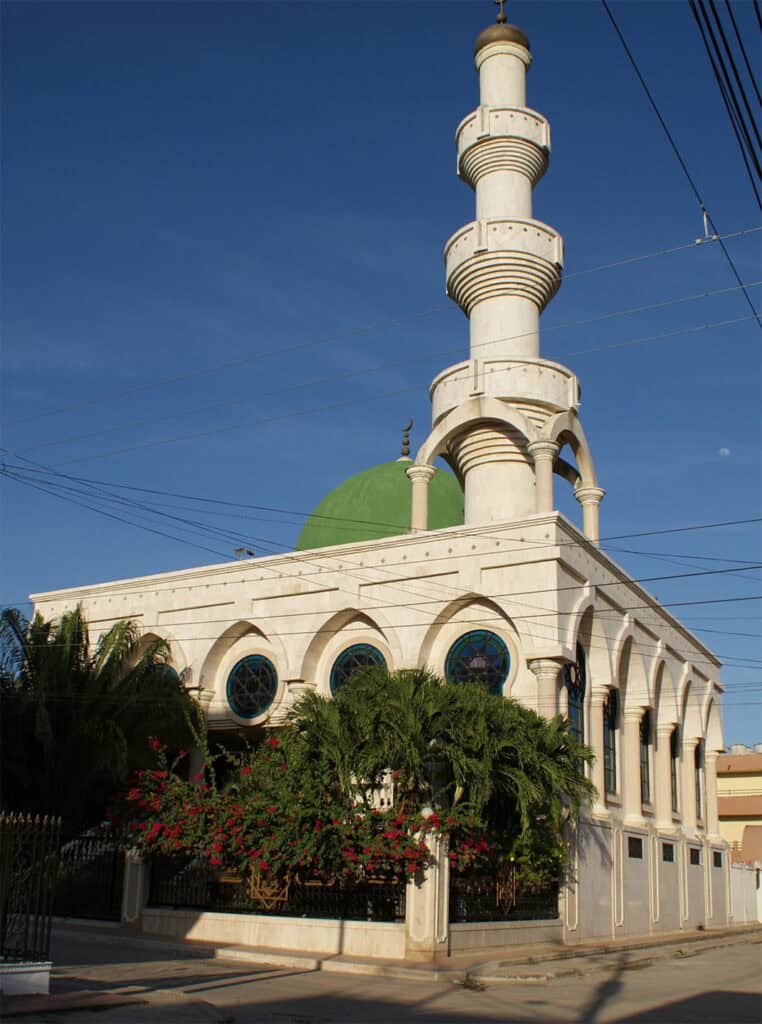
Key characteristics of Moorish and Castilian architecture in Colombia include:
- Intricate tile work adds detailed decoration.
- Horseshoe arches are a prominent architectural feature.
- Decorative motifs reflect Moorish influence.
- Islamic design merges with Spanish aesthetics in churches and civic buildings.
- Towns are organized around central plazas, combining functionality and social structure.
3. Baroque Style
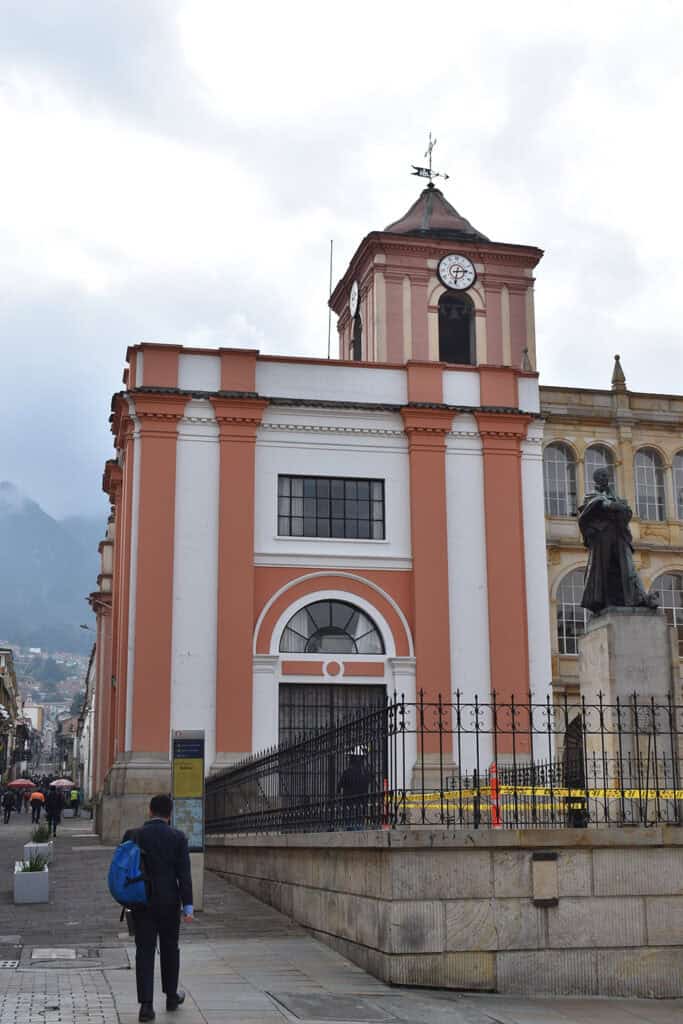

Baroque architecture in Colombia stands out for these ornate details:
- Grand, ornate designs dominate the style.
- Colonial churches feature elaborate altars and facades.
- Dramatic curves and intricate detailing are prominent, as seen in Alexandria Cathedral.
- The style reflects both religious devotion and the wealth of the colonial elite.
4. Republican Architecture
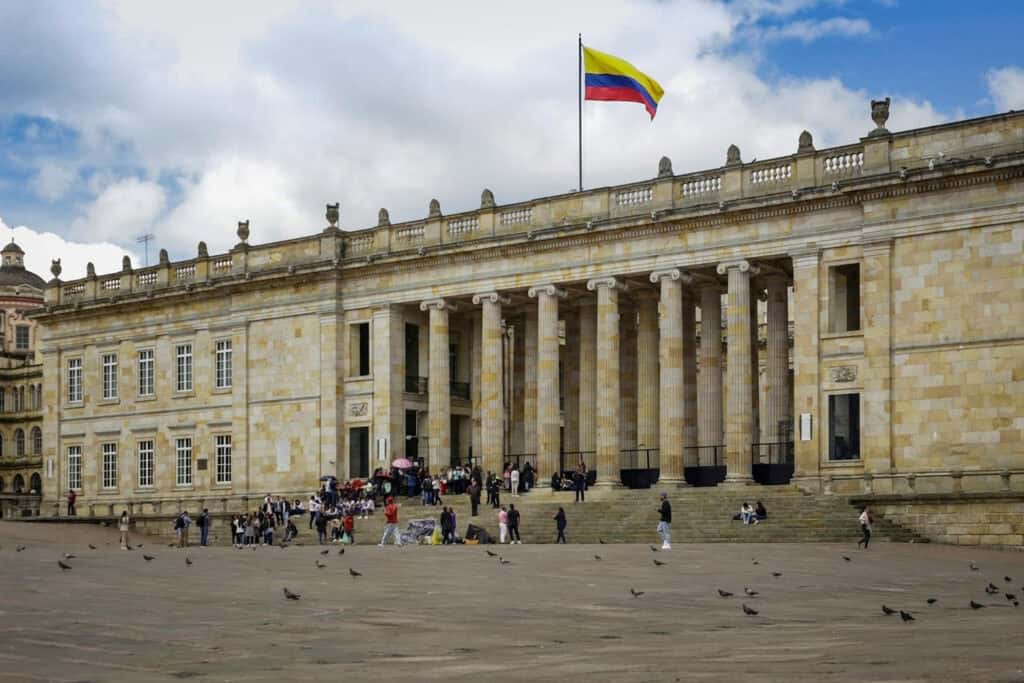
Republican architecture in Colombia is marked by these neoclassical features:
- Neoclassical elements define the style.
- Columns, domes, and pediments symbolize national pride.
- Public squares reflect democratic ideals in urban planning.
- This Style marks a shift towards modernity in design.
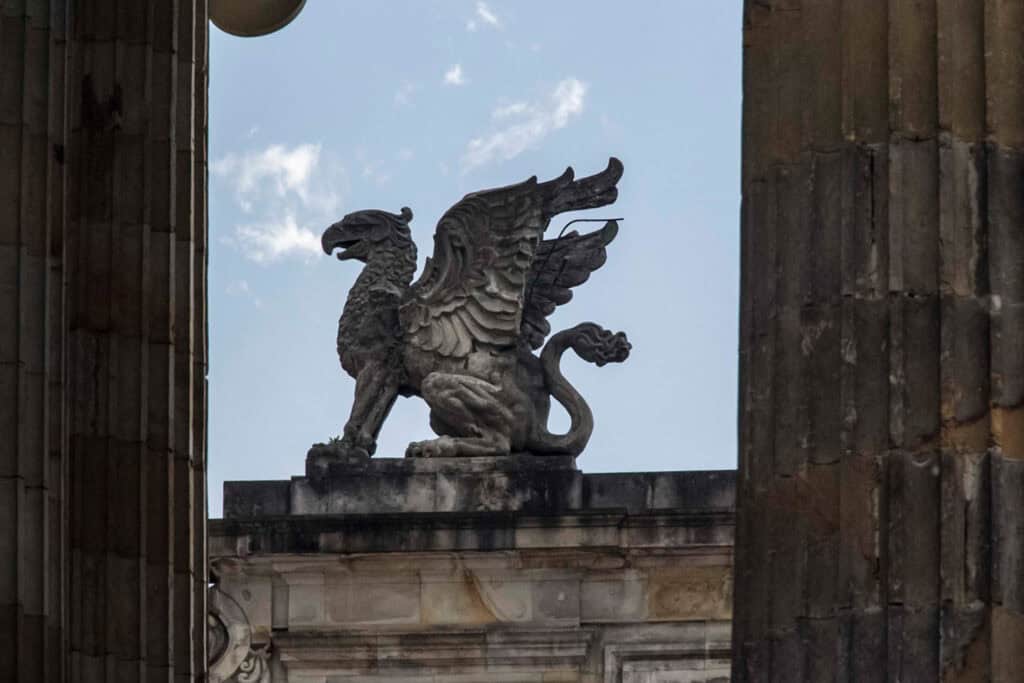
5. Modern Architecture

Modern architecture in Colombia is defined by these innovative elements:
- Innovative materials and styles merge functionality with aesthetics.
- Iconic buildings often incorporate sustainable practices and technologies.
- New buildings reflect global design trends.
- Larger cities like Bogotá showcase striking modern structures.

Materials and Construction Techniques
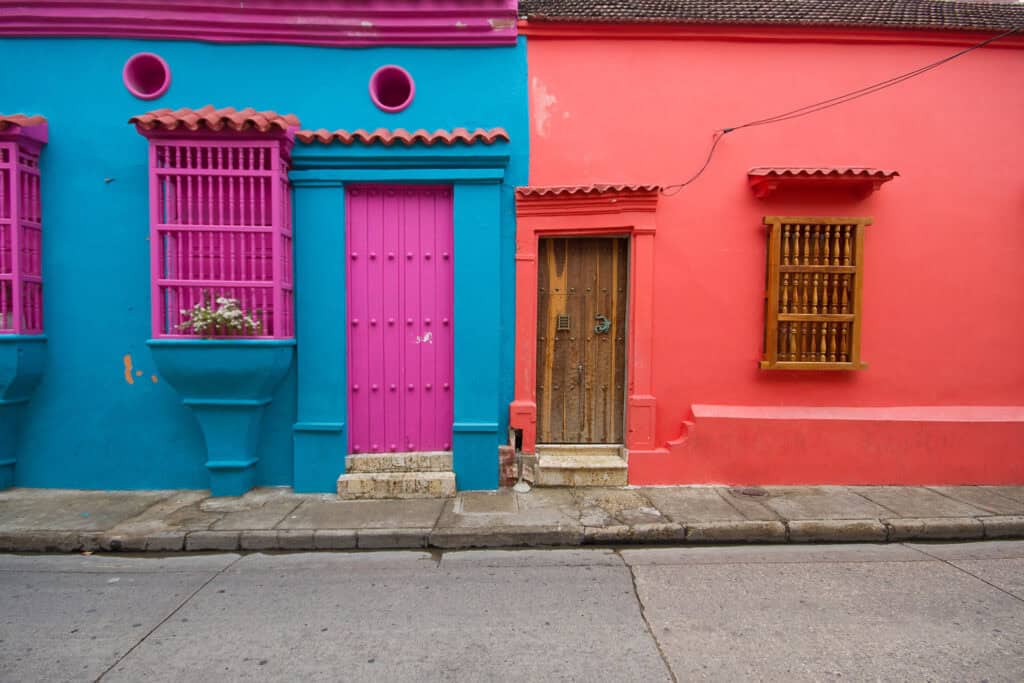
Colombian architecture reflects a rich blend of traditional and modern materials and techniques.
Local Materials

Traditional Colombian buildings often use local materials. These include palm tree leaves, adobe, clay, stone, and wood. These materials not only enhance aesthetic appeal but also provide practical benefits.

Adaptation to climate is a significant focus in construction. Buildings often have large open courtyards and fortified walls. They allow for ventilation and protect against harsh weather.
See also: Traditional Bulgarian Architecture: 4 Styles & Trends
Traditional Construction Techniques
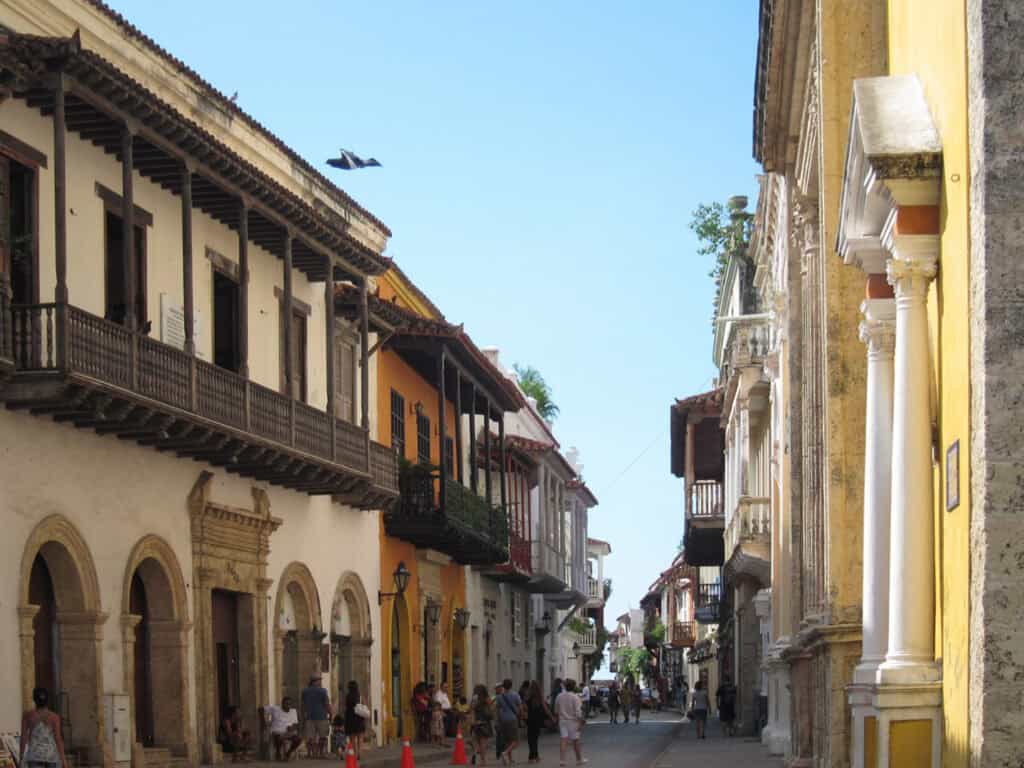
Craftsmanship is vital to Colombian architecture. It is seen in the use of wrought iron and intricate stonework. Public buildings and churches have detailed ironwork for decoration. Stone is used for its strength and durability, especially in fortified walls.
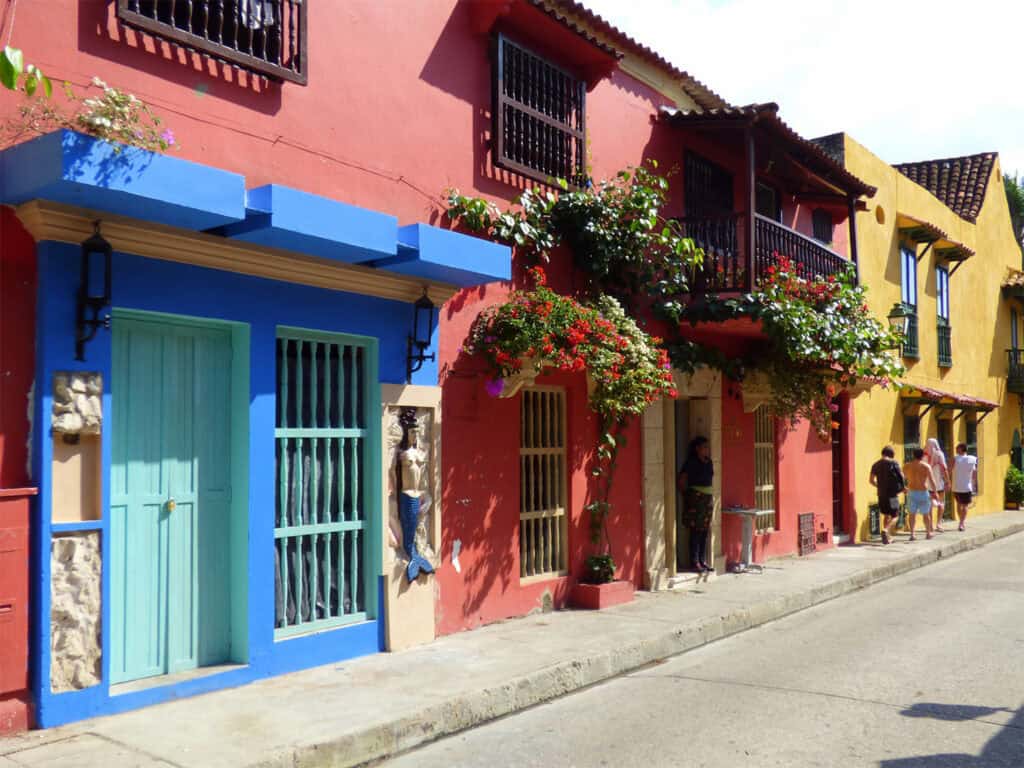
Modern Materials
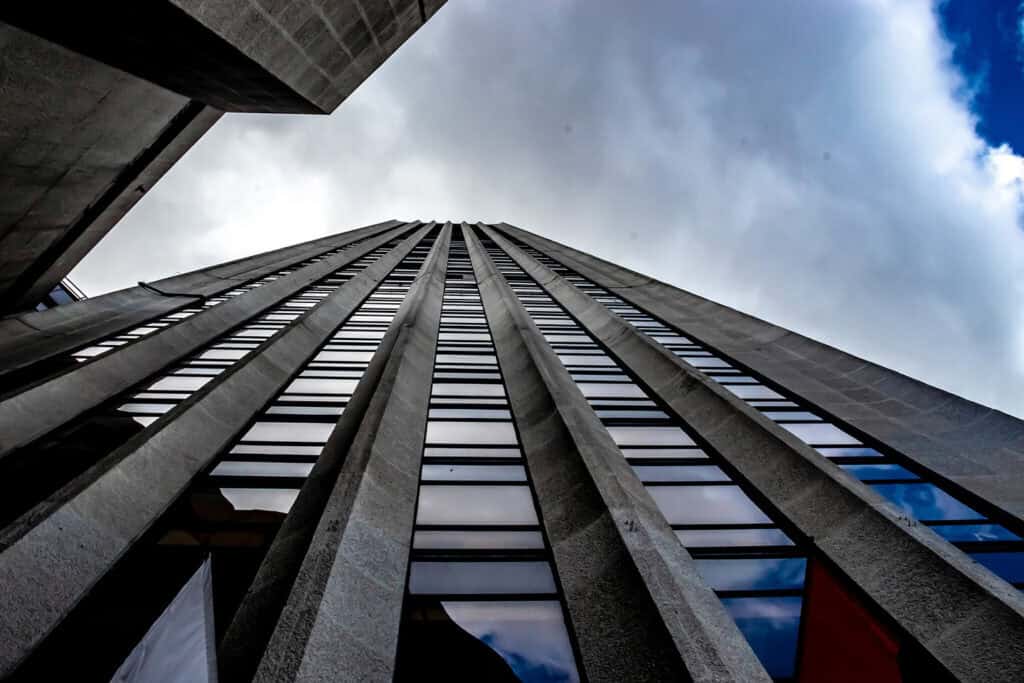
Modern Colombian architecture now uses concrete, steel, and glass. This has changed how buildings are made. These materials allow for innovative designs and greater structural integrity.

Modern buildings often integrate with older ones. This blend revitalizes urban areas and preserves their cultural heritage. It showcases a shift in architectural thinking while honoring history.
Traditional Colombian Architecture: A Recap
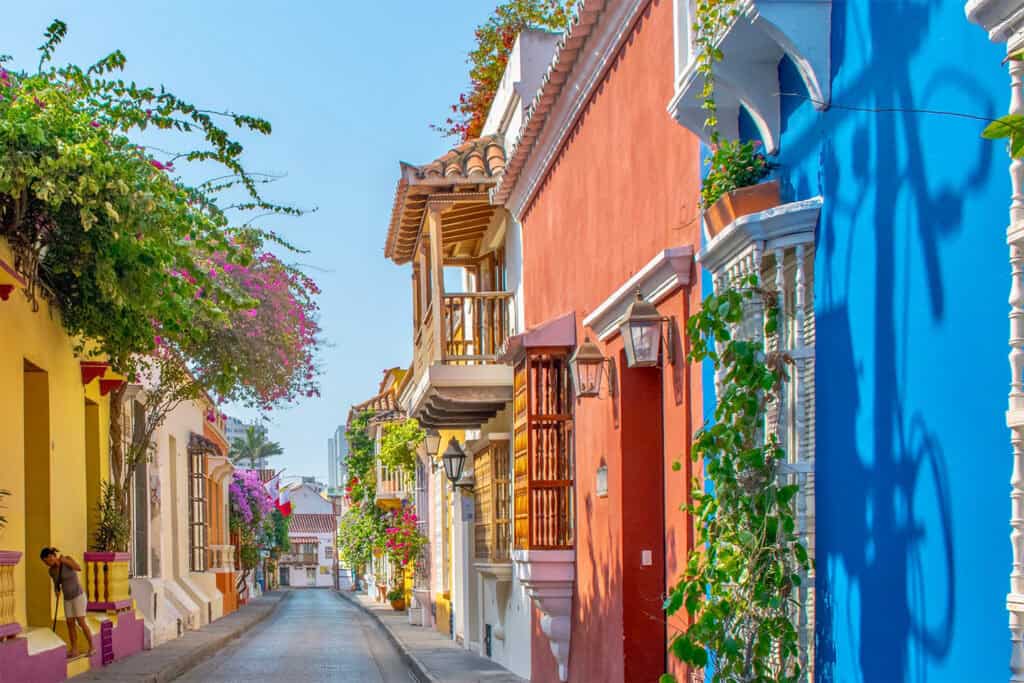
Colombian architecture showcases a remarkable evolution, reflecting its rich cultural heritage. It blends traditional Spanish colonial styles with modern designs. It shows the nation’s historical journey.
Preserving historical buildings remains crucial. As Colombia evolves, it should adopt new architecture. But, it must respect its past. This will sustainably reflect its vibrant culture. Each structure tells a story. It adds to the narrative of this unique country.



